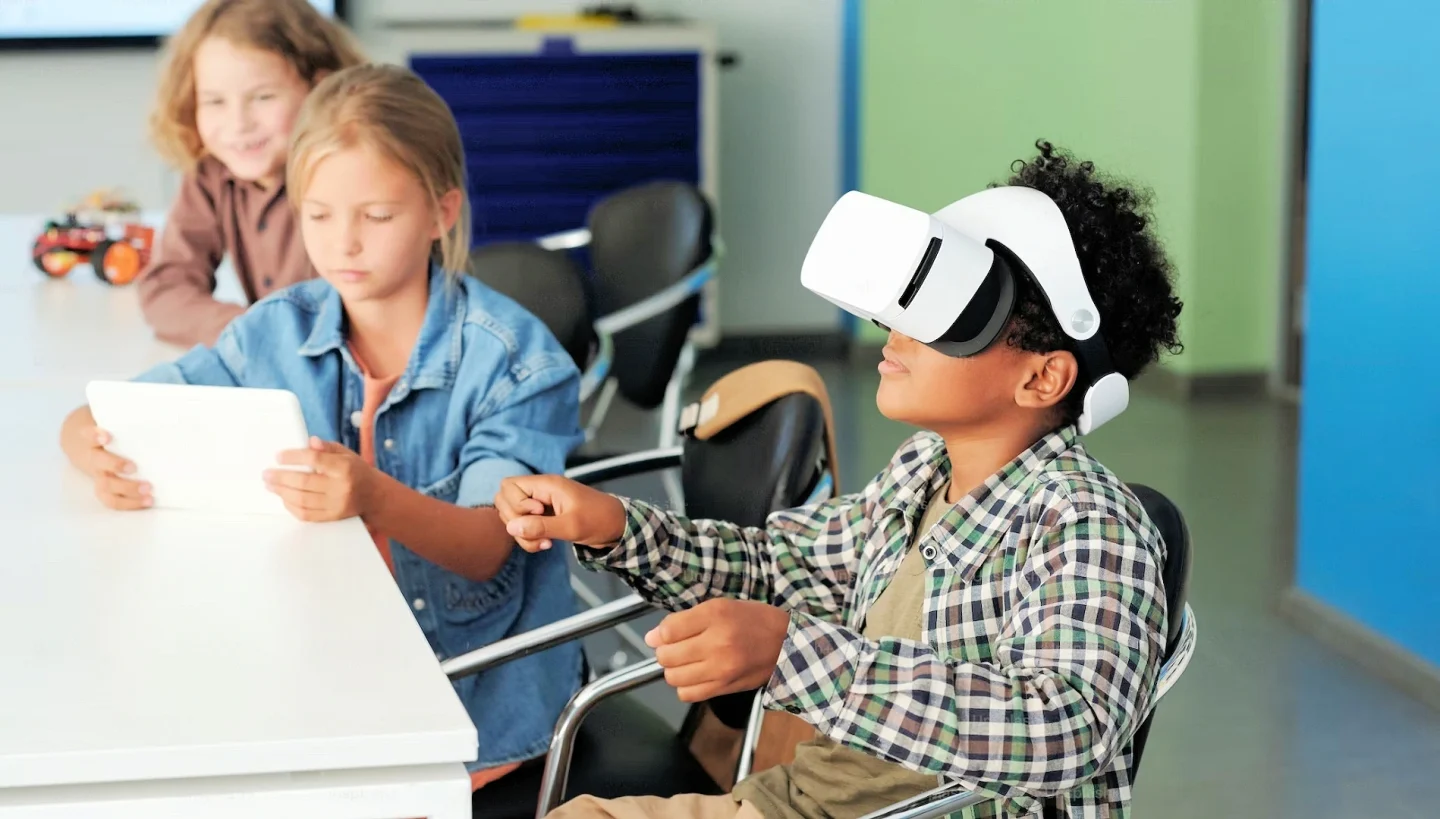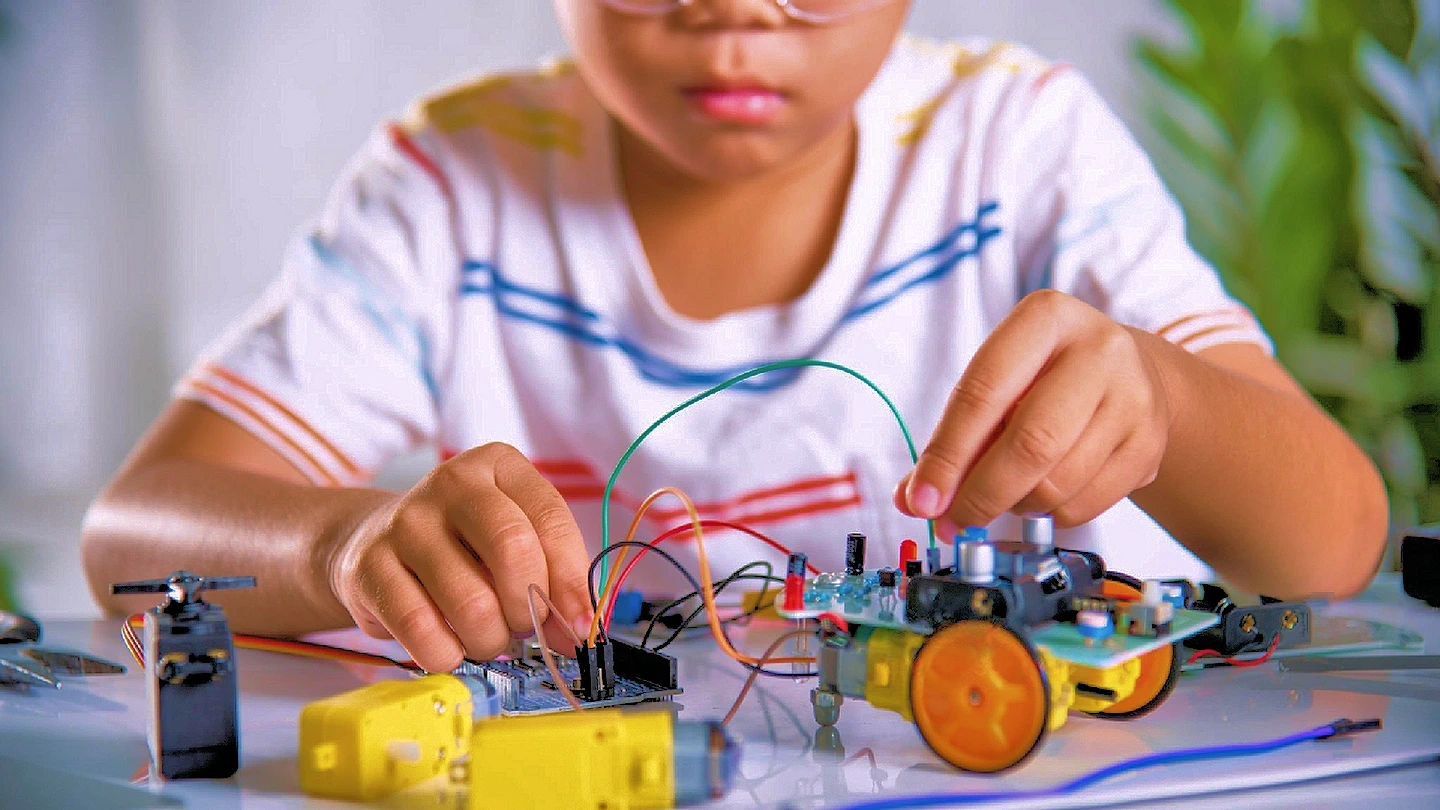Technology has always been pivotal in education, driving innovations and creating new, immersive learning experiences. Human Anatomy VR stands out as a revolutionary tool, bridging the gap between theoretical knowledge and practical understanding in studying the human body. But how exactly does this technological marvel transform the learning landscape for students delving into the intricacies of human anatomy?
- Engaging Learning: VR creates a captivating environment where students can explore and interact with various aspects of human anatomy in a 3D space.
- Realistic Experiences: It provides a lifelike representation of the human body, allowing students to explore organs, systems, and processes in real time.
- Interactive Exploration: Students can manipulate, dissect, and investigate anatomical structures, gaining hands-on experience in a risk-free virtual space.
The intersection of technology and education
Integrating Virtual Reality (VR) into educational settings, particularly in subjects like human anatomy, has opened up a world where complex concepts are transformed into interactive 3D models. This enhances students’ visual understanding and allows them to engage with the subject matter in a profoundly immersive manner.
A new dimension to learning: The VR impact
Virtual Reality (VR) has reshaped the traditional methods of learning anatomy, offering a three-dimensional perspective that textbooks and 2D models simply cannot provide. Here’s how VR brings a fresh, innovative approach to anatomy studies:
- In-Depth Exploration: VR allows students to delve deep into the human body, exploring each layer, organ, and system with unparalleled detail and precision.
- Safe Practice Environment: Students can practice dissections and explore pathological conditions without risk, ensuring a safe and ethical learning environment.
- Enhanced Retention: VR’s immersive and interactive nature aids in better retention of information, as students are actively engaged in the learning process.
The realistic approach to complex concepts
Human anatomy, with its myriad of systems, organs, and processes, can be a complex subject to grasp. VR simplifies this complexity by presenting students with a realistic, hands-on approach to explore and understand the intricate details of the human body.
- Visualizing Theoretical Knowledge: Concepts read in textbooks come to life, providing a visual representation that enhances understanding.
- Interactive Learning: Engaging with the anatomical models, students can learn through doing, which is often more impactful than passive learning.
- Accessibility: VR breaks down geographical barriers, allowing students from various locations to engage in similar, high-quality learning experiences.
Empowering educators
Not only students but educators also find a valuable ally in VR technology. It enables them to illustrate complex anatomical concepts more easily and engagingly, ensuring that the knowledge imparted is comprehensive and retained.
- Dynamic Teaching Tools: Educators can use VR to create dynamic lessons catering to various learning styles.
- Student Engagement: VR’s interactive and exciting nature ensures that students are attentive and engaged.
- Assessment and Feedback: VR platforms often come with tools that allow educators to assess students and provide immediate feedback on their performance.
Implementing VR in anatomy education
While VR brings many advantages to the table, it is crucial to acknowledge and navigate the challenges that educators and institutions might face in its implementation.
- Technological Barriers: Ensuring all students can access the necessary VR technology and hardware can be a logistical and financial challenge.
- Training Educators: The effective use of VR in education requires that educators are proficient in utilizing and troubleshooting the technology.
- Developing Content: Creating VR content that is both educationally robust and technically smooth can be a complex process.
Crafting solutions for smooth implementation
Addressing these challenges head-on with strategic planning and resource allocation is pivotal to successfully integrating VR into anatomy education.
- Collaborations: Institutions can collaborate with tech companies and educational platforms to make VR technology more accessible to students.
- Professional Development: Offering training and professional development opportunities for educators to become adept at using VR technology.
- Leveraging Pre-Developed Content: Utilizing available VR content and platforms specifically designed for anatomy education to minimize the burden of content creation.
Ensuring inclusivity in VR learning
In implementing VR, ensuring that the technology is accessible and inclusive for all students is paramount. This involves considering students with disabilities and ensuring that the VR content is adaptable and provides equal learning opportunities for all.
- Adaptable Content: VR content should be adjustable to cater to the varied needs of students, ensuring everyone can engage effectively.
- Support Systems: Implementing support systems to assist students who may face challenges navigating VR learning environments.
- Feedback Mechanism: Establishing a robust feedback mechanism to continually refine and adapt VR content and methodologies based on student and educator input.
Embarking on a future journey: VR in anatomy and beyond
Incorporating VR into anatomy education is not merely a transient trend but a stepping stone toward a future where technology and education are inextricably intertwined. The potential applications and future prospects of VR in education are boundless.
- Beyond Anatomy: While anatomy is a prime example, VR has the potential to revolutionize various other fields of study, providing immersive learning experiences across disciplines.
- Global Classrooms: VR can create global classrooms where students worldwide can engage in collaborative learning experiences, breaking down geographical barriers.
- Continuous Innovation: As technology evolves, so will the applications of VR, opening new doors for innovative educational approaches and learning methodologies.
Conclusion
Human Anatomy VR is a testament to technology’s incredible potential to transform educational paradigms. By providing students with a realistic, interactive, and engaging platform to explore and understand the human body, VR enhances their learning experience and empowers educators with dynamic tools to impart knowledge.
Frequently asked questions
What is Human Anatomy VR, and how does it benefit anatomy education?
Human Anatomy VR provides a virtual reality platform where students can explore and interact with 3D models of the human body, enhancing understanding, engagement, and retention of anatomical concepts by providing a realistic and hands-on learning experience.
How does VR technology provide a more immersive learning experience than traditional methods?
VR allows students to explore the human body in a 3D space, delve into each layer and system with precision, practice dissections in a risk-free environment, and engage with complex anatomical structures interactively, which is impossible with traditional 2D models and textbooks.
What challenges do educational institutions face in implementing VR technology?
Challenges include ensuring technological access to all students, training educators in VR technology use, and developing robust and smooth VR content for educational purposes.
How can educational institutions navigate through the challenges of implementing VR?
Solutions include forming collaborations with tech companies, providing professional development for educators, leveraging pre-developed VR content, and ensuring that VR learning is inclusive and adaptable to cater to the varied needs of all students.
How does VR in anatomy education ensure inclusivity for all students?
VR content can be modified to cater to different needs, support systems can be implemented to assist students in navigating VR learning, and a feedback mechanism can be established to continually refine VR methodologies based on input from students and educators.
What is the future potential of VR in educational settings beyond anatomy?
VR has the potential to revolutionize various fields of study by providing immersive learning experiences across disciplines, creating global classrooms for collaborative learning experiences, and continuously innovating educational approaches as technology evolves.
How does VR benefit educators in teaching anatomy?
VR provides educators with dynamic teaching tools, ensuring high student engagement due to its interactive nature. It often comes with assessment tools that allow educators to evaluate and provide feedback on student performance.



